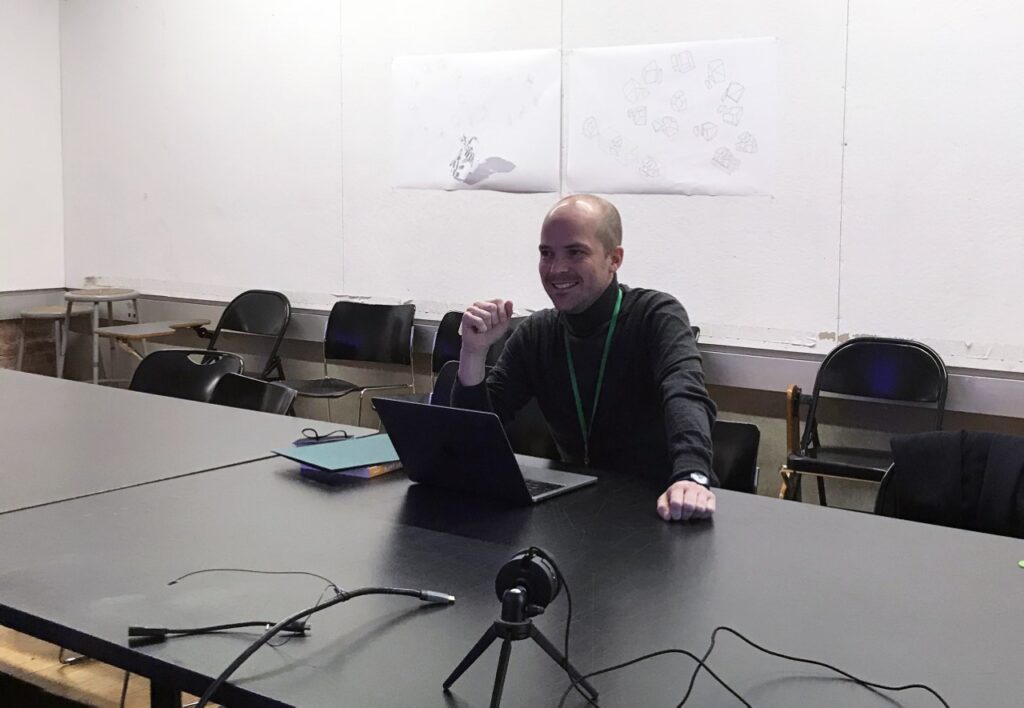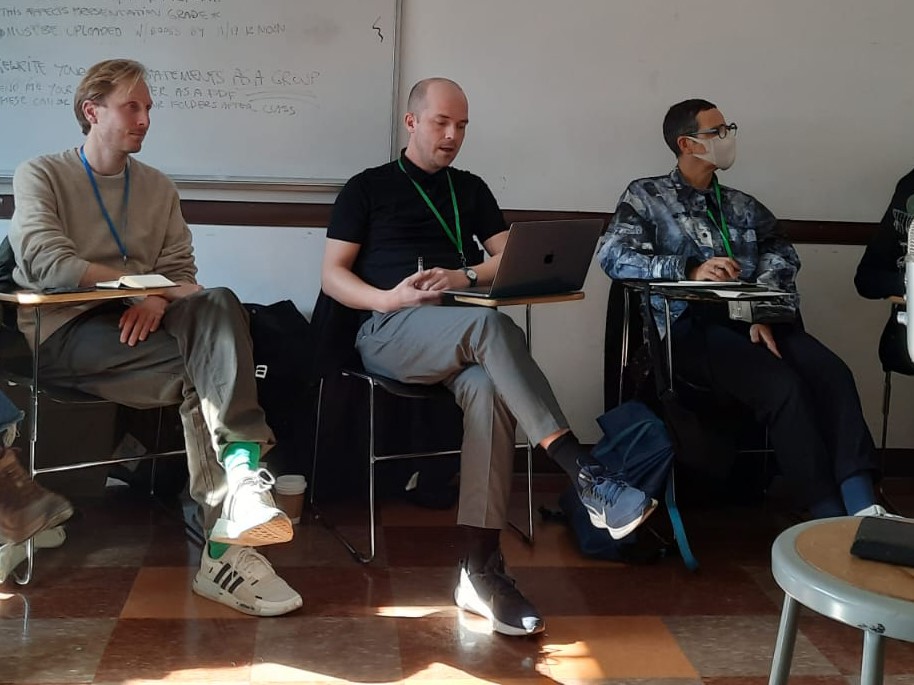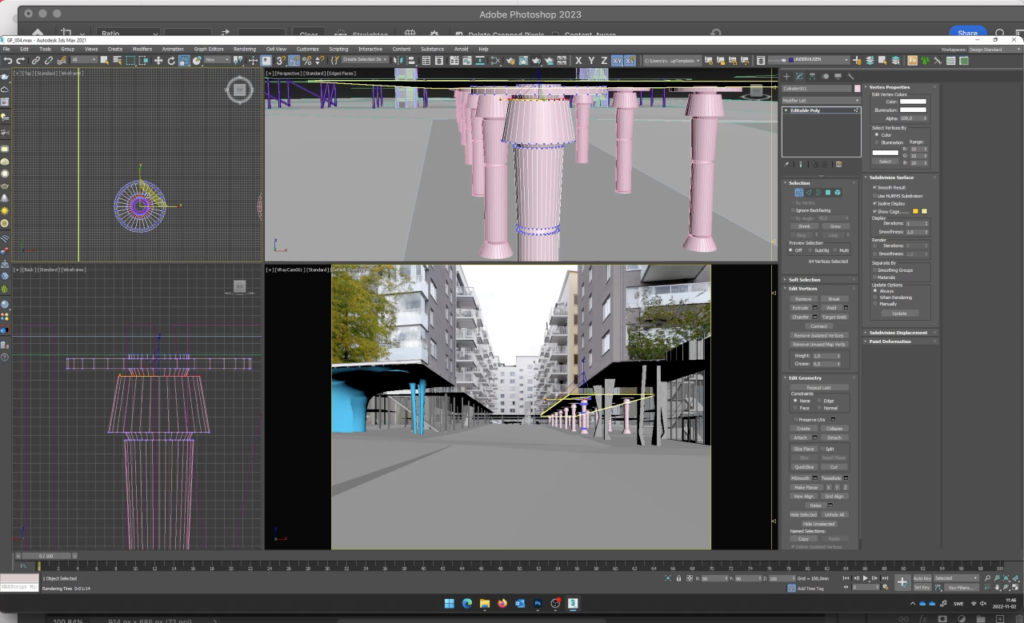Hannes Frykholm
Rothwell Chair Postdoctoral Associate
2023
2022
Hannes Frykholm is an architect and lecturer in architecture at the University of Sydney School of Architecture, Design and Planning. Between 2021 and 2024, Hannes was the Rothwell Postdoctoral Researcher for the project “Living in the City” co-chaired by Anne Lacaton and Jean-Philippe Vassal. His current research focuses on the interior urbanism of housing architecture, investigating how access to more free space in residential buildings can address the challenges of high-density cities.
“I see in the work of Lacaton & Vassal the understanding of architecture as a fundamentally democratic open-ended project, where acts of addition and restructuring are just as important as proposals which rebuild. I would like to work with them to explore parallels between such an approach and Greek-French philosopher Cornelius Castoriadis’ notion of “imaginary institutions of society” – the idea that society is a continuous social and political negotiation around human co-existence. Perhaps the true autonomy of architecture exists in the unfinished quality of any built object, and the fact that what is built must be imagined and negotiated, again and again. To think of architecture this way, is to situate our profession at the construction site of a democratic project. With Lacaton & Vassal, I look forward to approaching questions of housing with this in mind, exploring architecture both as the physical support for everyday life, and the scaffold for imagined lives to come.” – Hannes Frykholm
Publications
A spatial biography of an ordinary apartment, offering a perspective on architecture, time, and the poetics of everyday life.
Frykholm, H. (2025). Infra-Ordinary Architecture. Konstig Books.
Frykholm, H. (2025). Tower: After Forty-Six Years of Living. Architecture and Culture, 1–22.
An article based on part of Hannes Frykholm’s Waterloo Housing research was recently published in ‘Fabrications’ – the Journal of the Society of Architectural Historians, Australia and New Zealand.
Frykholm, H. (2023) ‘A Village Stood on End’: Anthropology and the Interior of the Modernist Tower, Fabrications, DOI: 10.1080/10331867.2023.2284463
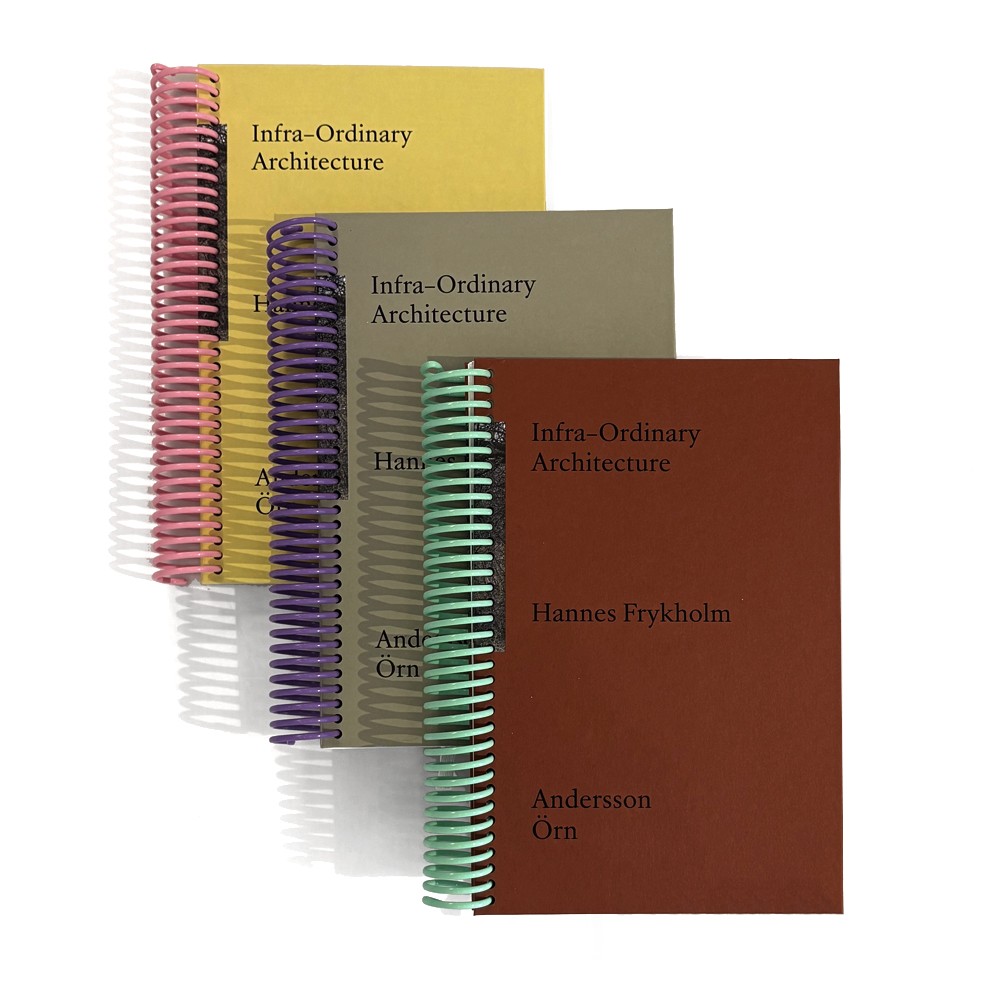
Research Grant on Singapore’s Void Decks – December 2023
Hannes Frykholm has been awarded an EMCR Seed Grant from the Sydney Southeast Asia Centre for his project “After Flexibility: Change and Permanence in Singapore’s Void Decks”. The project explores the consequences of ongoing state initiatives to fill-in the multi-purpose ground floors – the void decks – of Singapore’s high-density public housing. The research will be developed with support from Lilian Chee (National University of Singapore) and representatives of the Singapore Housing and Development Board.”
The Sydney Southeast Asia Centre builds on the expertise of and facilitates collaborations between over 400 University of Sydney academics who specialise in Southeast Asia. The Centre focuses on partnerships and collaboration between researchers and practitioners working on critical real-world Southeast Asia issues, such as economic and social reform, infectious diseases and the environment.
No more demolitions: alternatives to public housing redevelopment – July 2023
A public forum discussing alternatives to redevelopment!
Redfern Community Centre, Tuesday 18 July 2023
At this local public form, Hannes discussed international exemplars of renovating and retrofitting public housing.
Other speakers included:
- OFFICE, a narrm/Melbourne based non-profit architecture practice, who have developed the RETAIN/REPAIR/REINVEST model for public housing based detailed assessments of the Ascot Vale and Barak Beacon estates
- Hands Off Glebe, a local resident action group who have developed retention and refurbishment proposals for Glebe’s Franklyn St and Wentworth Park Road estates
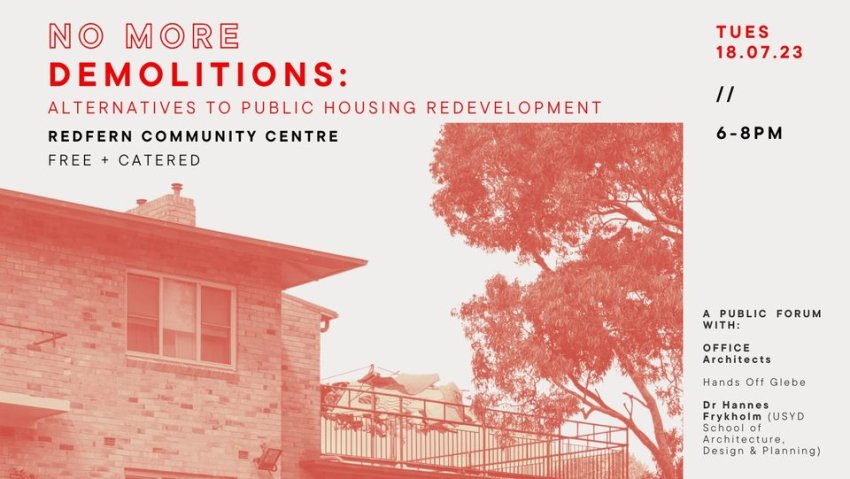
A call to arms for architects and planners
Minimally Disruptive Urbanism, Edinburgh Collage of Art Symposium – Jun 2023
The Minimally Disruptive Urbanism project is coordinated by Professor Chris L. Smith, at the Sydney School of Architecture, Design and Planning, The University of Sydney, Australia; Professor Suzanne Ewing at the Edinburgh School of Architecture and Landscape Architecture, University of Edinburgh, UK and; Associate Professor Lily Chi at Architecture, Art and Planning (AAP), Cornell University, US. The project was awarded The University of Sydney – The University of Edinburgh Partnership Collaboration Awards (2022-2023).
Hannes presented his paper ‘Architectural Silence in a ‘Vibrant’ City: The Parking Garage as Street Frontage’.
Abstract: [read more]
Urban redevelopment projects are often envisioned as “vibrant”, not silent, but the figure of silence can complicate things, and urge for a sharper attention to the already existing site. This paper considers the notion of architectural silence as a strategy for a minimal urban transformation, exemplified in a parking garage in Sydney. The essay argues that to rethink the term “silence” opens for other ways of understanding “vibrancy” in the city. Discussing the positive silence that composer John Cage found in Mies van der Rohes work, the essay suggests that architecture can be a mediator of the continuous changes of the surrounding. A site-close observation of George Street in the Waterloo Estate of central Sydney – a social housing area slated for redevelopment – illustrates that the street and the plots vibrate with the life that is already there. The essay concludes with a sketch for how such architectural silence can be applied to one of the buildings along George Street, a souterrain parking garage. With small adjustments, the addition of a light source and glass panels, the garage can become an active street frontage for people on both sides of the façade, not performing property, only offering views and reflections. Silence then, as a material and spatial practice can resonate the vibrancy that already exists in places like George Street
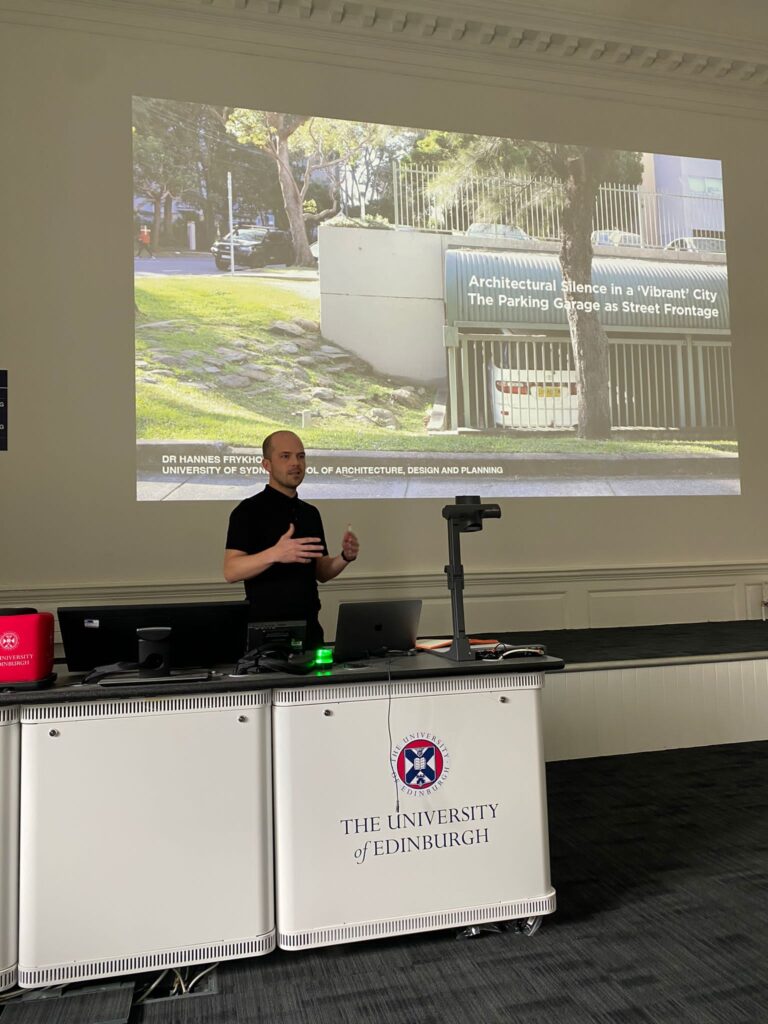
19th annual Architectural Humanities Research Association conference “Building Ground for Climate Collectivism: Architecture After the Antropocene” – November 2022
Hannes Frykholm presented his current research at the 19th annual Architectural Humanities Research Association conference, held at the Pratt School of Architecture, Brooklyn, New York, 17-19 November. Engaging architects, landscape architects, planners, and activists in parallel sessions on design and environmental crisis, the conference explored new forms of climate collectivism in design-oriented research, pedagogy and practice.
Read more
- On November 17, Hannes participated in a presentation of the recently published book Infrastructural Love: Caring for our Architectural Support Systems (Birkhäuser, 2022), which he co-edited with Helene Frichot (University of Melbourne), Adria Carbonell (KTH Royal Institute of Technology) and Sepideh Karami (Edinburgh School of Architecture and Landscape Architecture). Hannes gave a presentation on his chapter of the book and the current development of that research.
- In collaboration with Stockholm-based architectural practice SECRETARY (Dr. Helen Runting, Rutger Sjögrim and Karin Matz), Hannes presented the paper “Embracing the Void: It’s the Life under Buildings That Will Come to Matter”, on November 18. Revisiting the space underneath buildings in modernist architecture (supported by pilotis), the paper argued for the open-ended condition of the empty ground floor as its greatest quality. The presentation combined a filmed sequence of a speculative series of drawings of the ground floor, with a written proposal to rethink the void of this space in response to extreme weathers and flooding.
- In collaboration with Stockholm-based architectural practice SECRETARY (Dr. Helen Runting, Rutger Sjögrim and Karin Matz), Hannes presented the paper “Embracing the Void: It’s the Life under Buildings That Will Come to Matter”, on November 18. Revisiting the space underneath buildings in modernist architecture (supported by pilotis), the paper argued for the open-ended condition of the empty ground floor as its greatest quality. The presentation combined a filmed sequence of a speculative series of drawings of the ground floor, with a written proposal to rethink the void of this space in response to extreme weathers and flooding.
